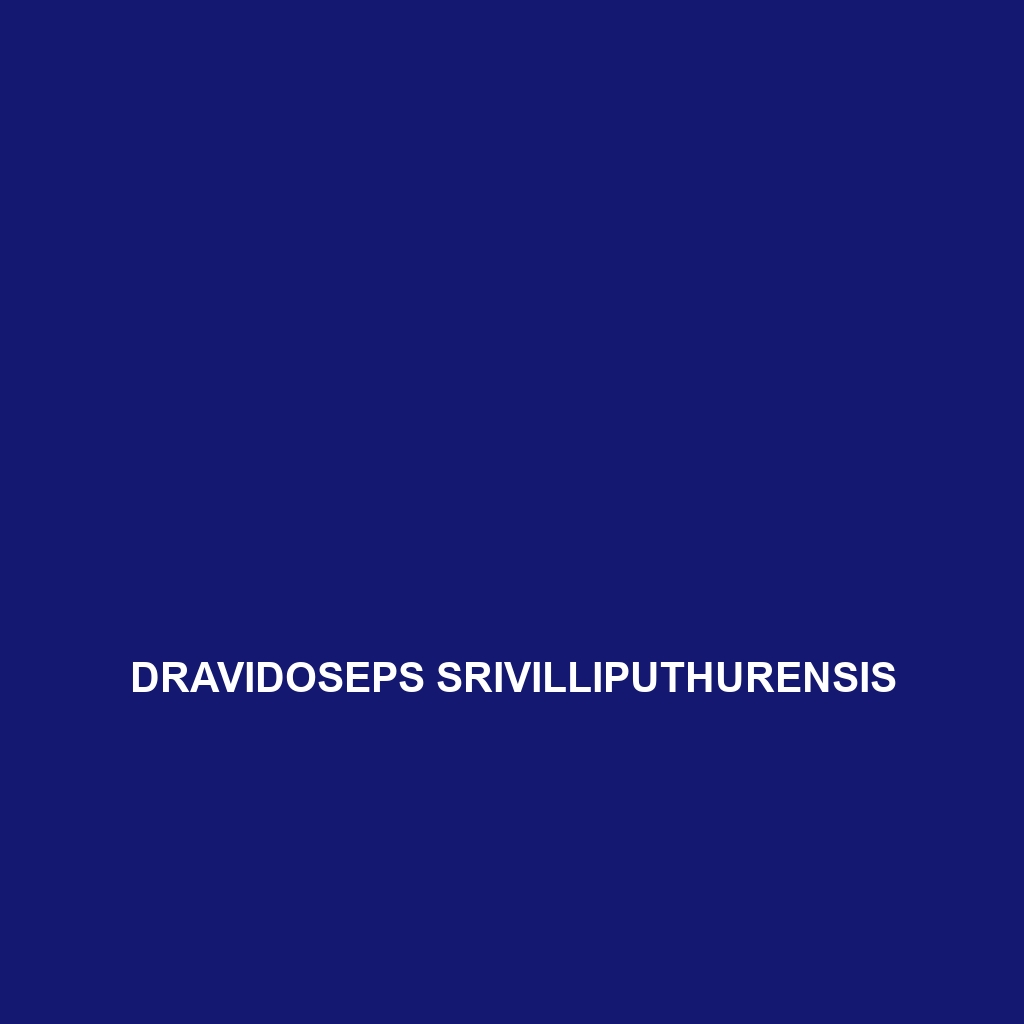Common Name
Dravidoseps srivilliputhurensis
Scientific Name
Dravidoseps srivilliputhurensis
Habitat
Dravidoseps srivilliputhurensis is primarily found in the Western Ghats region of India, specifically within the rainforests of Tamil Nadu. This region is characterized by its lush, tropical climate and rich biodiversity. The rainforest ecosystem provides a unique habitat with high humidity levels and consistent rainfall, making it an ideal environment for many species. The specific microhabitats include damp leaf litter, undergrowth, and the crevices of fallen logs where moisture is retained. This species thrives in shaded areas, away from direct sunlight, which is essential for its survival due to their moisture-reliant physiology.
Physical Characteristics
Dravidoseps srivilliputhurensis is a small, slender lizard with distinct physical characteristics that set it apart from other species. Adults typically reach a length of about 15-20 centimeters. The coloration varies from dark brown to a lighter beige, often featuring intricate patterns that serve as camouflage against the forest floor. The scales are smooth and somewhat shiny, adding to its unique appearance. A notable feature is its elongated body with a flattened head, which aids in navigating through dense vegetation. It also has a long, tapering tail that is essential for balance.
Behavior
This species exhibits primarily diurnal behavior, making it active during daylight hours. Dravidoseps srivilliputhurensis utilizes its agility to forage for food, often seen darting through the underbrush. Socially, these lizards are generally solitary, although males may display territorial behaviors, such as head-bobbing and puffing up their bodies to deter rivals. Interestingly, during mating season, males engage in complex courtship displays that include subtle body movements and color changes to attract females. Their keen eyesight and quick reflexes also allow them to evade predators effectively.
Diet
Dravidoseps srivilliputhurensis is primarily an insectivore, which means its diet consists mainly of insects. This includes ants, beetles, and small arthropods found within its rainforest habitat. Its excellent camouflage and swift movements enable it to ambush prey successfully. Additionally, during certain periods when insects are scarce, it may supplement its diet with small invertebrates. This adaptability in dietary habits plays a crucial role in its survival and reflects the ecological dynamics of its environment.
Reproduction
The reproductive cycle of Dravidoseps srivilliputhurensis typically occurs during the warmer, wetter months of the year. Mating usually peaks during the onset of the monsoon season. After a gestation period of approximately two months, females lay clutches of around 4-6 eggs in sheltered, moist locations, such as leaf litter or decaying wood. The eggs incubate for about three weeks before hatching. Parental care is minimal; however, the hatchlings are equipped with instincts to fend for themselves from the moment they emerge, highlighting their independence early on in life.
Conservation Status
Currently, Dravidoseps srivilliputhurensis is classified as a vulnerable species due to habitat loss and degradation primarily caused by deforestation and human encroachment in the Western Ghats. The rainforest ecosystems are under threat from agricultural expansion and urbanization, which significantly impact the population of these unique lizards. Conservation efforts are underway to protect their habitat and promote sustainable land use practices. Local organizations work towards habitat restoration and conservation awareness to ensure the survival of this species.
Interesting Facts
One of the fascinating aspects of Dravidoseps srivilliputhurensis is its remarkable ability to blend into its surroundings with almost perfect camouflage. This adaptation not only protects it from predators but also aids in its hunting strategies. Additionally, studies have shown that these lizards can regulate their body temperature by choosing specific microhabitats, showcasing their advanced behavioral adaptations to thrive in a tropical rainforest setting.
Role in Ecosystem
Dravidoseps srivilliputhurensis plays a significant role in its ecosystem as a predator, helping to control the populations of insects and invertebrates. This not only maintains the ecological balance but also contributes to the overall health of the rainforest habitat. Furthermore, by serving as prey for larger predators, they contribute to the food web dynamics. Their presence indicates a healthy environment, making them important indicators of ecological health within the Western Ghats.
